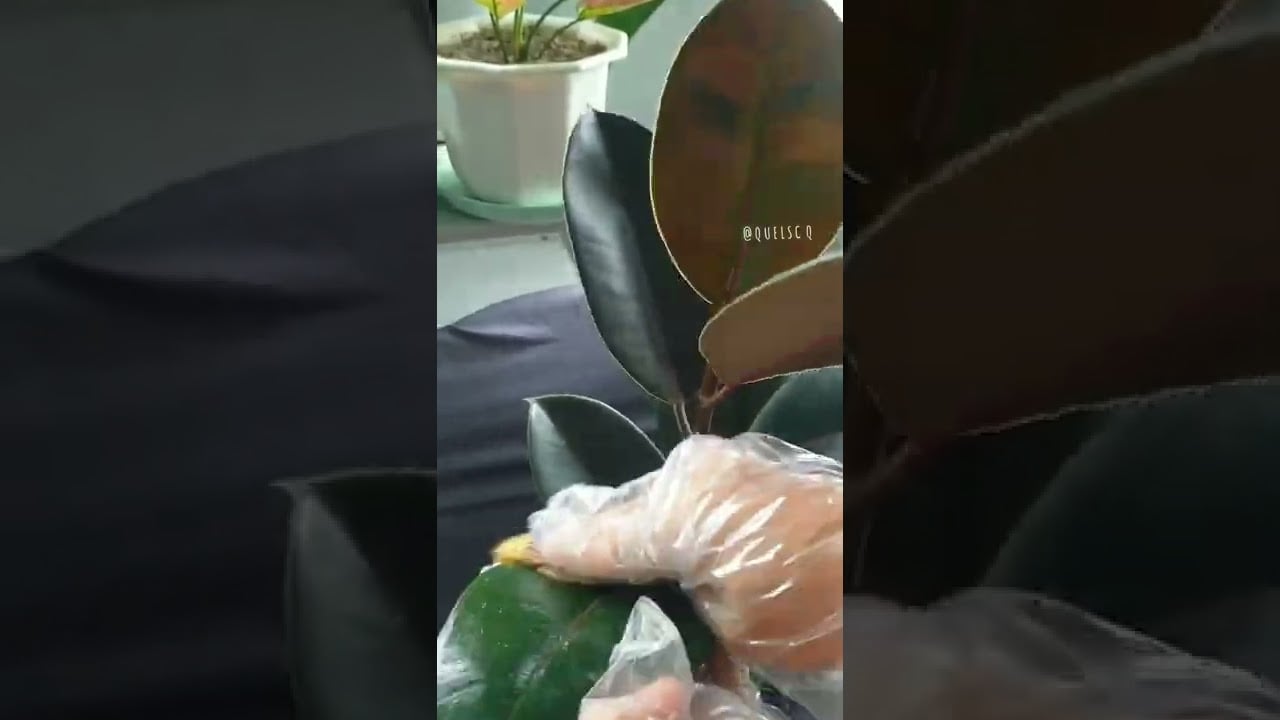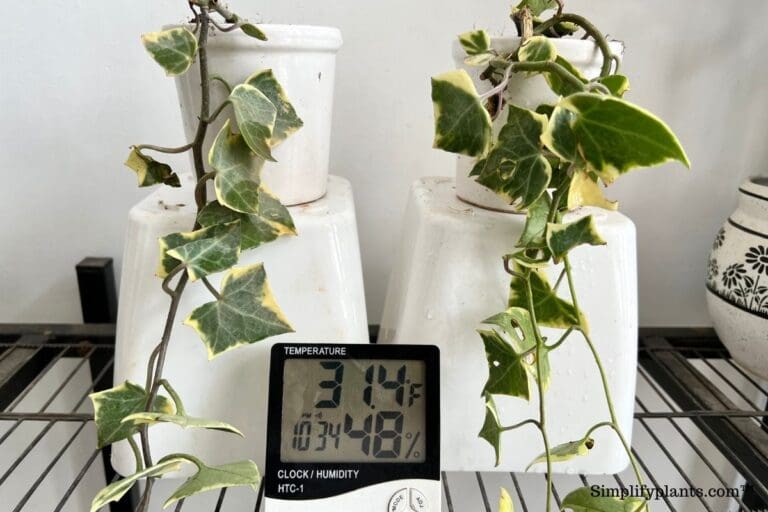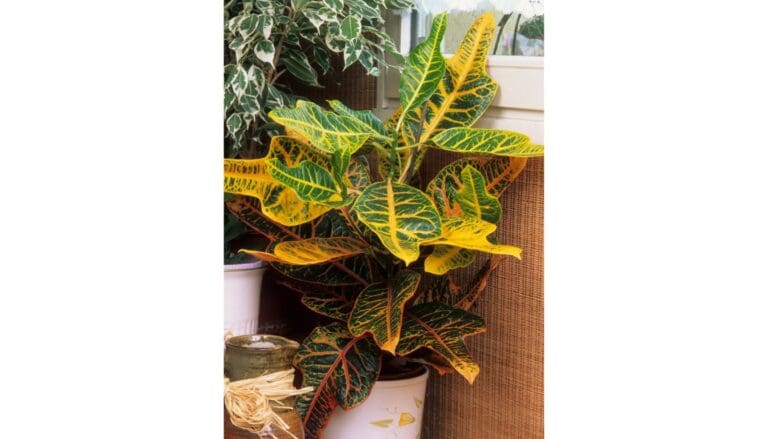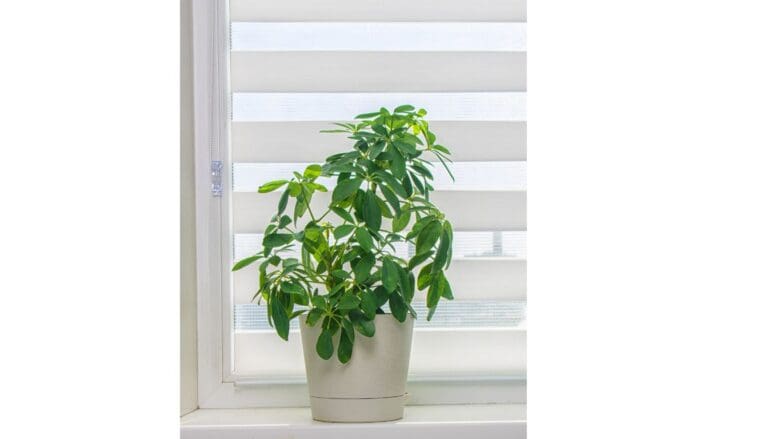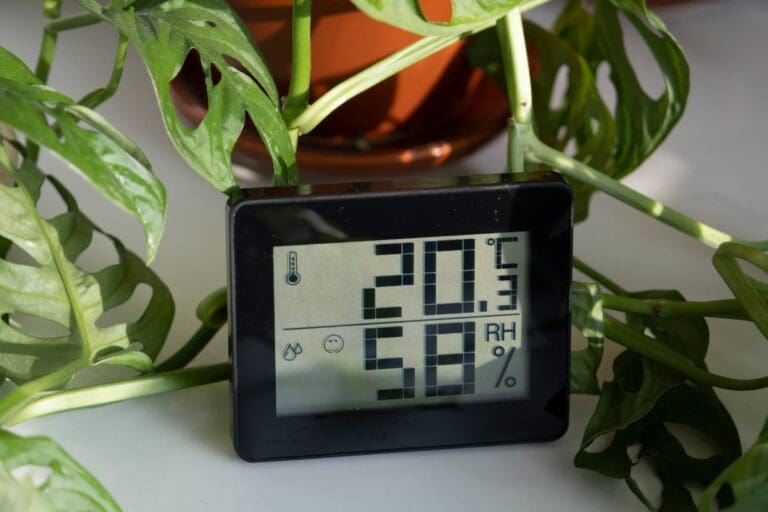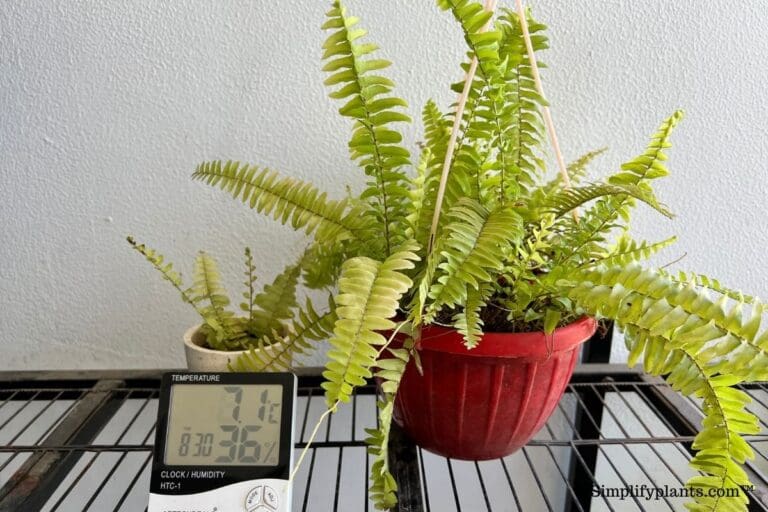9 Best Natural Leaf Shine Alternatives for Healthy, Happy Plants
I love keeping my plants looking healthy, but honestly, I’m not a fan of chemical sprays that could do more harm than good.
Shiny leaves just make any plant pop, but those store-bought products? They often have stuff I’d rather skip.
That’s why I’m always hunting for simple, natural options that keep plants clean and happy without the harsh side effects.
In this article, I’ll show you some easy ways to give leaves a gentle shine with things you probably already have at home.
These ideas are safe, natural, and honestly—just less hassle all around.

Please note: Simplify Plants is reader-supported. As an Amazon Associate, I earn from qualifying purchases made by our readers with no extra cost added to you all! Some links in the post are affiliate links and I get a commission from purchases made through links in the post.
1) Diluted Milk Spray

I like using diluted milk spray because it’s cheap, easy, and actually works. Milk’s got natural proteins that give plant leaves a soft shine—no weird chemicals needed.
All I do is mix one part milk with two parts water in a spray bottle. Keeps things light and avoids that sticky buildup nobody wants.
I spray the leaves and wipe them down with a soft cloth. It gets the dust off and really makes the surface look clean.
I only use this method once or twice a month, honestly. Too much milk and you’ll get a cloudy look instead of a shine, which is kind of the opposite of what we want.
It’s one of the easiest tricks I know, and I always have milk at home anyway.
2) Banana Peel Rub
Ever tried a banana peel? The inside has natural oils that wipe away dust and leave a soft glow—no mess, no chemicals.
I just take the inside of a peel and gently rub it on the leaf. It’s kind of amazing how much brighter the leaves look right away.
That little layer from the peel actually helps keep dust from settling again so quickly. No sprays, no fuss.
I always use a fresh peel and go easy, especially on thinner leaves. A gentle touch is all you need.
Afterward, I’ll buff the leaves with a dry cloth to get rid of any banana bits. Leaves end up smooth and shiny.
Honestly, it’s one of my favorite natural tricks. Plus, it’s free and takes about a minute—just do it next time you eat a banana.
3) Olive Oil Wipe

Olive oil is another classic for getting leaves clean and healthy. It’s already in my kitchen, so why not?
I just dab a tiny drop of olive oil onto a soft cloth or paper towel, then wipe the leaf surface. Dust disappears, and you get a nice, subtle shine.
But here’s the thing: don’t overdo it. Too much oil clogs pores and can mess with the plant’s breathing. Less is definitely more.
I only do this every so often, just enough to keep things looking fresh.
Works best for big, smooth leaves. If the plant’s got fuzzy or textured leaves, I skip the oil—too hard to clean off.
It’s quick, safe, and natural, and I never need to buy special sprays.
4) Neem Oil Solution

Neem oil is a go-to for me since it’s both a cleaner and a natural pest control trick. No harsh chemicals, and it leaves a gentle shine.
I mix a few drops of neem oil with water and a tiny bit of mild soap. The soap helps it blend so it sprays evenly.
A light spray on the leaves, then a gentle wipe with a soft cloth—dust and bugs both take a hike.
I stick to small amounts, though. Too much neem oil and things get greasy, which nobody wants.
It’s safe indoors and doesn’t stink up my space like some commercial sprays.
This mix keeps my plants looking healthy and natural—plus, I feel good about what I’m using.
5) Aloe Vera Gel
Aloe vera gel is another gentle, natural choice. It gives leaves a light shine, nothing harsh.
I mix a little gel with water, so it spreads easily and doesn’t get sticky.
Wiping the leaves with this mix makes them clean and fresh. It’s great for picking up dust, too.
I use a soft cloth or cotton pad, just to be careful not to scratch anything.
Aloe vera gel works best on broad leaves—think pothos, monstera, or philodendron. No heavy residue, just a nice finish.
Since aloe is plant-based and safe, I never worry about using it around the house.
6) Coconut Oil Buff

Coconut oil is my pick when I want leaves to look extra fresh. Gives a light shine, and you barely need any.
I put a drop of coconut oil on a soft cloth and gently wipe down each leaf. The trick is to go thin—no one wants greasy plants.
Too much oil can block the pores, so I always use a light touch.
Works best for big, sturdy leaves. If a plant’s got fuzzy or delicate leaves, I just skip the oil.
Coconut oil is natural and safe in small amounts. It’s my quick fix when I want houseplants to look their best.
7) Soap and Water Rinse
A simple soap and water rinse is my go-to when leaves get dusty. Super easy and safe, and I always have what I need.
I mix a few drops of mild soap with lukewarm water. Always gentle soap, so the leaves don’t get damaged.
Then I dip a soft cloth in the soapy water and wipe each leaf. Dust, dirt, and small pests come right off, and there’s no sticky feeling left.
For big plants, sometimes I just rinse them in the shower with the same solution. Makes life easier.
I always rinse with plain water after to get rid of any leftover soap. Keeps the leaves from drying out or spotting.
It’s affordable, quick, and natural—and honestly, it just works.
8) Vinegar and Water Spray

A vinegar and water spray is another favorite. It’s cheap, easy, and helps remove dust and light residue that dulls leaves.
I mix one part white vinegar with ten parts water in a spray bottle. That way, it’s gentle and won’t hurt the plants.
After spraying, I wipe each leaf with a soft cloth. Buildup disappears, and the natural shine comes through.
Don’t go heavy on the vinegar—too strong can damage leaves. I stick to a light spray and a good wipe.
It’s quick, safe, and I always have vinegar around. Super simple way to keep plants looking their best.
9) Castile Soap Mix
Castile soap mix is easy and gentle. Since Castile soap is made from natural oils, it doesn’t leave behind any harsh stuff.
I add a few drops of Castile soap to a spray bottle of water, spray the leaves lightly, and wipe with a soft cloth. They look clean and refreshed.
Too much soap can leave streaks or make things sticky, so I go easy. Less is more with this one.
Honestly, I love how fast and easy this is. No special products needed, just a clean, happy plant.
Why Choose Natural Leaf Shine Alternatives?
I stick with natural options because my plants stay cleaner without the chemical overload. Plus, it’s better for the planet and cuts down on waste.
Benefits for Plant Health
Natural leaf shine avoids clogging up leaf pores. Plants need those pores to breathe and take in carbon dioxide—cover them in heavy oils and things just don’t work right.
Options like water, diluted vinegar, or a soft cloth remove dust without any sticky leftovers. That means more light gets through and photosynthesis can actually happen.
I’ve noticed natural methods help keep pests and mold at bay. Some sprays trap moisture, which is just asking for fungus or bugs. Clean, dry leaves are way less trouble.
Just wiping leaves with a damp cloth helps with long-term growth. It’s not just about shine—it’s about keeping plants strong.
Environmental Impact
Feels good knowing that natural alternatives mean less plastic and fewer chemicals in my home. Most commercial sprays come in plastic or aerosol cans that just end up in the trash.
By making my own mixes, I reuse spray bottles and skip the extra packaging. Even something like a homemade mix of water and lemon juice helps me avoid buying new stuff.
Natural ingredients break down fast and don’t mess up the soil or water, so I don’t worry about where they end up.
Even switching to a reusable cloth instead of wipes makes a difference. Over time, these little habits save money and help the planet.
Tips for Applying Natural Leaf Shine Safely
I just try to keep things simple—clean plants, happy leaves, and no damage or weird buildup. If in doubt, less is usually more.
Best Practices for Application
I always wipe leaves gently with a soft cloth or microfiber towel. That gets rid of dust before I even think about adding any natural shine.
If I skip this, the mixture tends to trap dirt and, honestly, makes more of a mess with streaks.
I like to use solutions like diluted coconut oil or aloe water with a light mist spray. After spraying, I wipe off any extra—no one wants soggy leaves hanging around.
Too much moisture just invites mold or pests, which is the last thing I need.
I test every mix on one small leaf first. If I notice spots, curling, or weird discoloration, I just stop right there.
It’s way better to lose one leaf than to risk the whole plant, right?
For fuzzy or delicate leaves, I never spray directly. I’ll just dab gently with a damp cloth or cotton pad instead.
That way, the surface stays safe and I don’t clog up those tiny hairs.
Common Mistakes to Avoid
I avoid overusing oils—they can block leaf pores pretty quickly. A super thin layer is all you need, and I never reapply more than once every few weeks.
Kitchen sprays like vinegar or lemon juice? I skip those for most plants. They’re just too acidic and can burn sensitive leaves.
I’m careful not to spray in direct sunlight. Wet leaves and strong light are a recipe for scorch marks.
Morning or evening, when the light’s softer, seems to work best.
And I always try to remember the undersides of leaves. If I ignore them, pests and dust can still hang out there even if the top looks spotless.
Frequently Asked Questions
I like using simple, natural items to keep my plants looking fresh. It just feels easier, safer, and honestly, I usually have what I need in the kitchen anyway.
What are some eco-friendly ways to make my plant leaves shine?
I use banana peels, diluted milk, and aloe vera gel since they’re safe and biodegradable. They get rid of dust and add a gentle shine—no harsh chemicals needed.
Can I create a homemade leaf shine solution with items in my pantry?
Yep! I mix milk and water or sometimes use a little olive oil on a soft cloth. Both work surprisingly well for cleaning and adding shine.
Are there any common household products that can double as leaf polish?
I’ll often grab a banana peel to wipe down leaves or use a drop of olive oil for a gentle polish. They’re easy to find and safe in small amounts.
How often should I apply natural leaf shine to my indoor plants?
For me, cleaning and shining the leaves every 2–4 weeks seems just right. It keeps dust away and helps the plants breathe.
What are the benefits of using natural leaf shine over commercial products?
Natural options are non-toxic, affordable, and safe for pets and kids. Plus, they don’t leave behind that heavy residue you get with a lot of store-bought sprays.
Can natural leaf shine solutions harm my plants if used incorrectly?
Yeah, they actually can. If I go overboard with the oil or get a little too enthusiastic with how often I apply it, the pores on the leaves might get clogged up.
I try to be gentle and usually just test on one leaf first. Better safe than sorry, right?
Recommended Garden Supplies
| Product Image | Our Recommended Gardening Supplies | Check Offers! |
|---|---|---|
Top Top
Top
Top
Top
Top
Top
Top
Top | rePotme Houseplant and Tropical Classic Potting Soil Mix | Check Offer On Amazon |
 Top
Top
Top
Top
Top
Top
Top
Top | Espoma Organic Indoor Plant Food | Check Offer On Amazon |
 Top
Top
Top
Top
Top
Top
Top
Top | GooingTop LED Grow Light 6000K Full Spectrum Clip Plant Growing Lamp | Check Offer On Amazon |
 Top
Top
Top
Top
Top
Top
Top
Top | Soil Moisture Meter | Check Offer On Amazon |
 Top
Top
Top
Top
Top
Top
Top
Top | Govee Hygrometer Thermometer, Bluetooth Enabled! | Check Offer On Amazon |
 Top
Top | LEVOIT Humidifiers for Large Room(Best For Plants) | Check Offer On Amazon |
 Top
Top
Top
Top
Top
Top
Top
Top | Upgraded DIY Automatic Drip Irrigation Kit, 15 Potted Houseplants Support | Check Offer On Amazon |
 Top
Top
Top
Top
Top
Top
Top
Top | Stainless Steel Heavy Duty Gardening Tool Set | Check Offer On Amazon |
 Top
Top
Top
Top
Top
Top
Top
Top | Bonide Insecticidal Soap | Check Offer On Amazon |
 Top
Top
Top
Top
Top
Top
Top
Top | Bonide 32 oz Spray Neem Oil for Organic Gardening | Check Offer On Amazon |
 Top
Top
Top
Top
Top
Top
Top
Top | Garden Safe Fungicide | Check Offer On Amazon |

